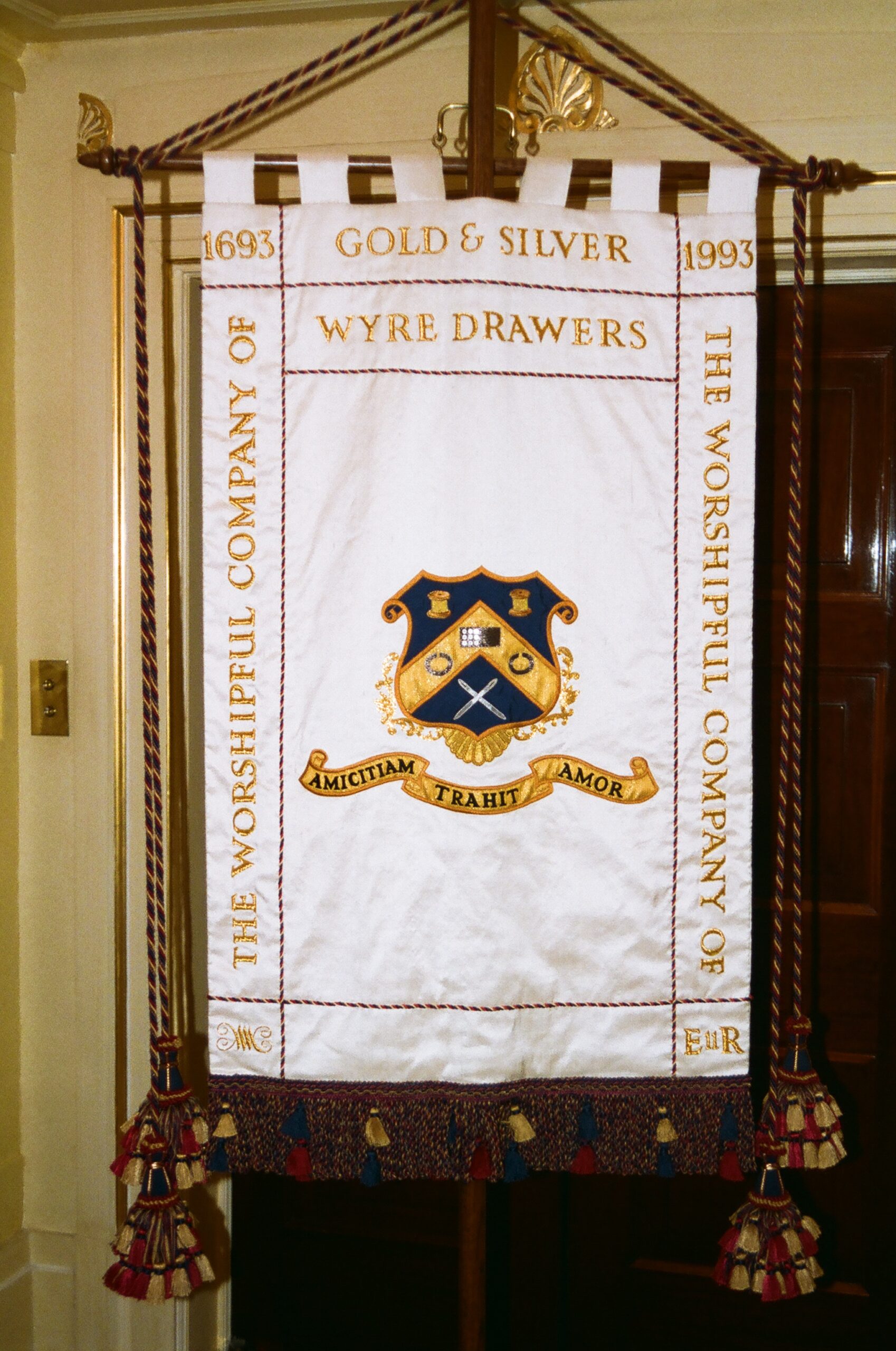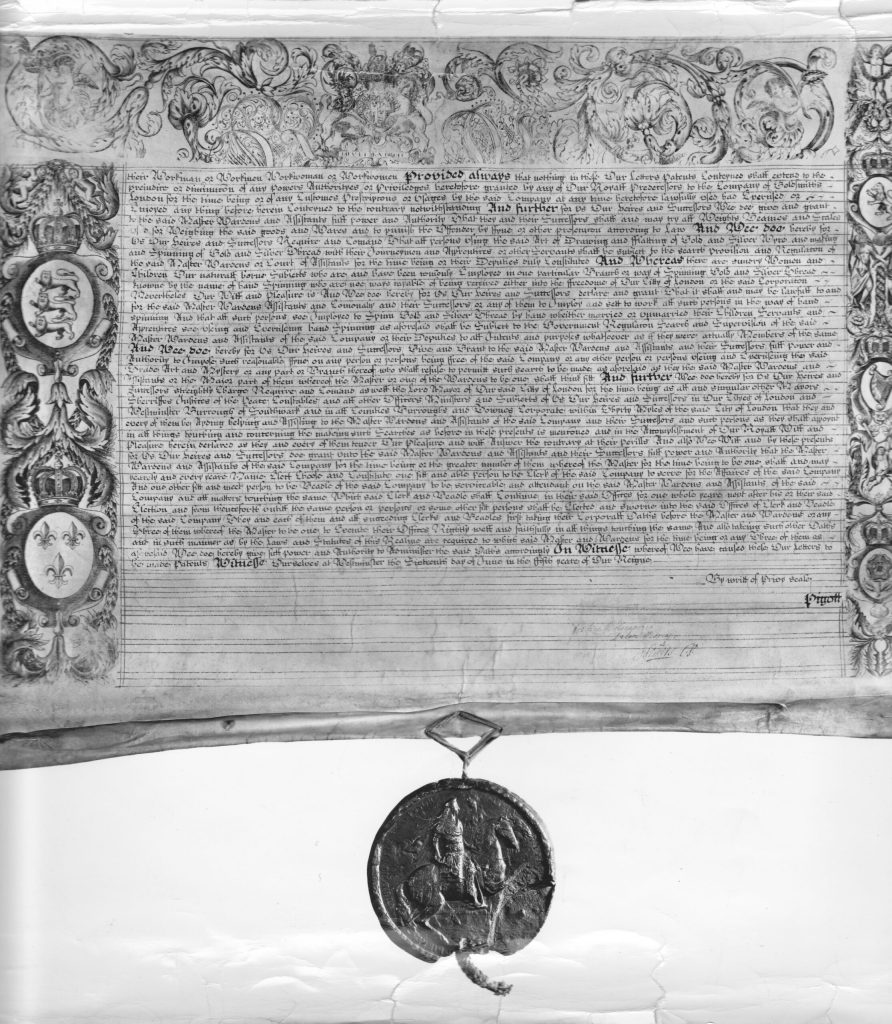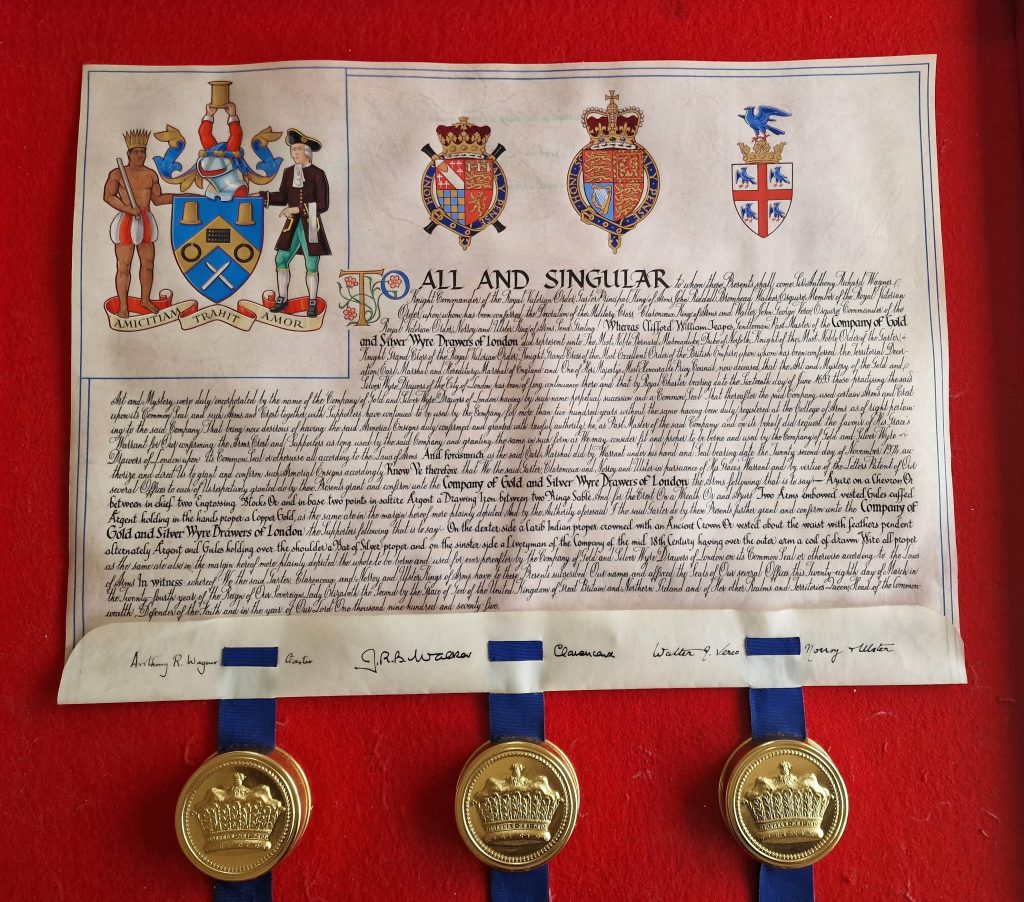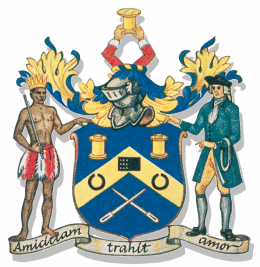History of the Company
In its formative years and certainly by the fifteenth century, the craft seemed to be in the hands of settlers from the continent. They had arrived in the City but, being foreigners, were restricted in this instance to an area around Mark Lane. The foregathering and concentration of a trade in its own particular part of the City was not uncommon as the various guilds developed in size and influence.
There is little evidence to show that the members of the Trade were united as a fraternity or guild until the early Stuart days. Before that time embroidery had been within the province of the Broderers Company whilst the Goldsmiths Company had wished to retain control over the usage of precious metals.
The unification came principally from the difficulties encountered as economic problems arose out of the consequences of using gold and silver for decorative purposes. This was because supplies came out of bullion available for the nation’s commercial activities, both domestic and international.
Matters came to a head when, in the reign of King James I, Royal Proclamations were made prohibiting the manufacture of gold and silver thread. The prohibition did not succeed and manufacture was then allowed under licence. The licensing system caused great scandals as monopolies were created. The difficulties encountered by the trade at this time together with a greater awareness of the usages of gold and silver wire enabled the craft to develop as a separate guild.
The Company’s first Charter was proposed by King James I in June 1623 to incorporate “Gould Wyre Drawers of the Citte of London”. The House of Commons with violent opposition (as it is recorded) rejected the Bill to ratify the Charter causing the King to declare it null and void.


Subsequent petitions to succeeding Stuart monarchs met with no success but persevering members of the trade presented their petition to the Crown. In the reign of King William and Queen Mary, the petitioners at last achieved their ambition, becoming incorporated as “one body corporate and politic in deed fact and name” with the title “Master, Wardens, Assistants and Commonalty of the Trade Art and Mistery of Drawing and Flatting of Gold and Silver Wyre and making and spinning of Gold and Silver Thread and Stuffe in our City of London”. This occurred in June 1693 and the Charter then granted remains the legal basis of the Company’s existence.
Subsequently the Court of Assistants presented a petition to the Court of Aldermen with a view to obtaining a grant of livery, which status was achieved in 1780. At this point the members became eligible to participate in the affairs of the Corporation of London, particularly as regards the election of the Lord Mayor and Sheriffs.
The Company’s fortunes declined following the French Revolution in 1789 when in consequence there was a markedly reduced demand for its products as the fashions of the day changed. As in all cases, the vicissitudes of trade improved in time to settle down to a steady usage still found in the embellishment of uniforms, vestments and regalia incorporating the wares of the craft.
Improved methods of production have resulted in a reduction in the numbers of craftsmen and craftswomen from thousands in the early days to hundreds today, but the Worshipful Company itself flourishes and members of the Livery involve themselves in the life of the City.
Letters Patent
The Company has historically used the Coat of Arms with Supporters by right through the grant of the James I Royal Charter of 1623, which in itself was a continuation of its rights as an unincorporated guild from the 1500s. In 1974 the Company approached the College of Arms to get an officially registered version. This was granted by the Kings of Arms (senior heralds) by Letters Patent in 1975 [Coll. Arms MS Grants 137.145]. The 1975 version follows the same description as below from 1623 but it should be noted that in terms of the colours used, except where strictly specified, and embellishment much is left to the individual artist and thus many versions exist. The Company have largely used an original version and this is reflected in the badges of the Master and Wardens and on other items of property. The minutes from the 1970s leave us with little idea as to the purpose of commissioning the College of Arms version and the only reference to the finished version is an agreement to get it framed.
The first historic reference to the Gold and Silver Wyre Drawers in 1545 is the recent discovery of the Longbow man’s wrist guard from the wreck of the Mary Rose. This features three repeated stamps of London City Guilds; the Girdlers, the GSWD and the Pin Makers (the City Guilds at the time were obliged by the Crown to provide men and arms on demand). Clearly the GSWD were by this time well established as an unincorporated Guild with a distinguishing Trademark.

Coat of Arms

The GSWD Coat of Arms, in use for much of its history, was introduced later. Horace Stewart, in his introduction to the History of the GSWD published in 1891, references four sources from the historic record describing the Coat of Arms including a description and line drawing. The earliest is by Joseph Edmondson, Mowbray Herald, in his Complete Body of Heraldry of 1780. This description was confirmed by further heralds some fifty years later; William Berry (15 years Registering Clerk to the College of Heralds) published in 1828, Sir Bernard Burke, Ulster King of Arms, and likewise Robson both published in 1830. We have been able to obtain an original copy of Edmonson’s and Robson’s and the other two are available by personal inspection in the restricted library at Leeds University.
The official description of the Coat of Arms from Edmondson (in 1780 f and s were interchangeable) is:
Gold and Silver Wire Drawers (London) incorporated the 14th June 21 Jac.I. 1623.
Arms Az. On a chevron or. Between two coppers in chief of the second, in bafe, two points in faltier ar. a drawing-iron between two rings (i.e. tools ufed by Wire-drawers) fa.
Crest. Two arms embowed, vested gu. Cuffed ar. holding between their hands proper. An engrossing -block or.
Supporters. The dexter an Indian proper, crowned with an eastern crown or, seated round the middle with feathers pendant alternately ar. and gu (silver and red).. Holding over his shoulder a bar of silver: the Sinister, a man vested proper, (called in the grant, a Silk Throwster) in his sinister hand a hank of silk ar (silver wire).
Motto: Amicitiam Trahit Amour (Love Draws Friendship)
Of particular significance, this description of our Coat of Arms is stated to be that of our first Charter from James I on the 14th June 1623 (there is no mention of the Coat of Arms in our second Charter granted by William and Mary in 1693, coincidently also on the 14th June). The handwritten copy of the first Charter, held at Guildhall Library, includes the shield of our Coat of Arms as it appears today, but without the two supporters. Although the Charter was issued then, the formal grant of the Livery did not happen until 1780. At that time the Company purchased the silver Beadle’s Mace, featuring the Motto, Shield and Crest of the company’s Coat of Arms. Prior to that, the GSWD Seal had been presented in 1742 by Warden Nicolas Cunliffe, later Master, featuring the Coat of Arms without supporters, and the Master’s Badge presented in 1880, paid for by subscription of the Court, with supporters.
When the first charter was signed, the first permanent settlement in the American colonies – Jamestown, named after King James I – had only been in existence for 14 years. At that time it was believed that gold and silver were to be found there. The description of the two supporters shows an Indian of high class carrying a bar or silver and a gentleman of the 16th and early 17th Centuries carrying a coil of drawn wire. It is evident that the GSWD Coat of Arms created around this time would symbolise both this trade in raw materials from the colonies and the drawing of gold and silver wire. It is our strong belief that that they are representative of a crowned and independent Virginian Indian leader, most likely from the Powhatan Confederation, standing tall and facing forward in concert together and on equal terms with a white Gentleman, both proudly holding up the shield of the company.
The supporters on our Coat of Arms represent diversity in harmony and reflect the good character of our company, which is something of which we are particularly proud.